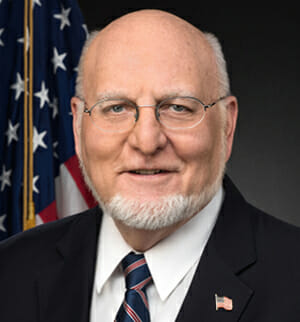
The Centers for Disease Control and Prevention updated its guidance to assisted living communities on Friday, providing recommendations on infection reporting, visitor restrictions and group activities.
The guidance came on the same day eight U.S. senators wrote to the CDC and Centers for Medicare & Medicaid Services chiefs calling for CDC guidance on reopening long-term care facilities to visitors.
Although assisted living communities do not have the same federal requirement as nursing homes to report COVID-19 cases, facility staffing and supply information to the National Healthcare Safety Network Long-term Care Facility COVID-19 module, participation is encouraged.
The CDC acknowledged that assisted living communities, which have yet to receive federal COVID-19 relief funding, serve the same vulnerable populations as skilled nursing facilities and nursing homes that have received federal aid to combat the virus.
“Given their congregate nature and population served, assisted living facilities are at high risk for SARS-CoV-2 spreading among their residents,” the CDC wrote. “If infected with SARS-CoV-2, the virus that causes COVID-19, assisted living residents — often older adults with underlying medical conditions — are at increased risk for severe illness.”
Along with seeking guidance from state and local officials regarding relaxing restrictions — including reintroducing visitors, allowing group activities or restoring communal dining — and infection control programs, the CDC also encouraged assisted living operators to refer to CMS nursing home reopening recommendations for guidance.
Specifically, the CDC recommended assisted living communities take the following actions to prevent the spread of COVID-19:
- Identify a point of contact at the local health department to facilitate prompt notification of suspected or confirmed cases among residents or employees.
- Educate residents, family members and personnel about COVID-19.
- Have a plan for visitor and personnel restrictions.
- Encourage the use of face masks.
- Encourage social (physical) distancing.
- Provide access to supplies, including hand sanitizer, and implement recommended infection prevention and control practices.
- Rapidly identify and properly respond to residents with suspected or confirmed COVID-19, including isolation.
- Report COVID-19 cases, facilitating staffing and supply information to the NHSN LTCF COVID-10 module weekly.
Legislators call for CDC guidance on reopening long-term care facilities
Eight U.S. senators, led by Sen. Maggie Hassan (D-NH), on Friday called on the CDC to issue specific guidance for when long-term care facilities can safely reopen their doors to visitors, and what steps these facilities should take to ensure the safety of residents and family members.
In a letter to the CDC and CMS, the senators said that previous guidance from the agencies does not provide enough details for long-term care facilities — including residential care communities, nursing homes, intermediate care facilities and hospices — to safely execute a plan to reopen to visitors. The legislators seek implementation guidelines, technical assistance and evidence-based best practices, as well as how this information will be communicated to facilities and families.
They also are seeking specific details on the role of testing in determining appropriate guidance for opening these facilities.
Although the senators said they support the restrictions on group activities and in-person contact to limit the spread of COVID-19, they said the “sustained isolation is also impacting the mental and emotional well-being of residents and their families.”
The ability to open long-term care facilities, the senators wrote, will take time and require a “significant investment from facilities and personnel, along with support from CDC, CMS and local public health officials.” It also will be contingent on how states and localities can limit the spread of COVID-19.
“Fact and evidence-based guidance from CDC that prioritizes safety, and provides measurable benchmarks, realistic timelines, and clear direction to visitors would provide residents and families with a measure of much needed clarity that they currently lack,” the senators wrote. “Additionally, coordinated guidance from CDC and CMS that provides family members and loved ones with a plain language description of the safety protocols that they will be required to adhere to when in-person visitation resumes, along with an explanation of the importance of these protocols, will improve the likelihood of that safety measure are understood and followed by facilities and visitors alike.”
In addition to Hassan, the letter was signed by Sens. Bob Casey (D-PA), Sherrod Brown (D-OH, Chris Van Hollen (D-MD), Jeff Merkley (D-OR), Jack Reed (D-RI), Elizabeth Warren (D-MA) and Jeanne Shaheen (D-NH).
Casey is the ranking member of the Senate Special Committee on Aging, and Warren is one of three members of Congress recently asking 11 assisted living companies to detail their COVID-19 strategies.




